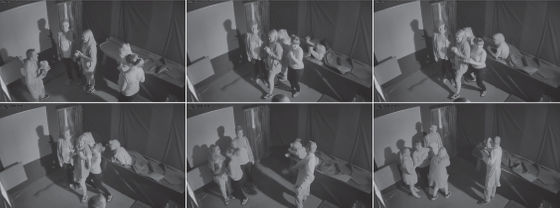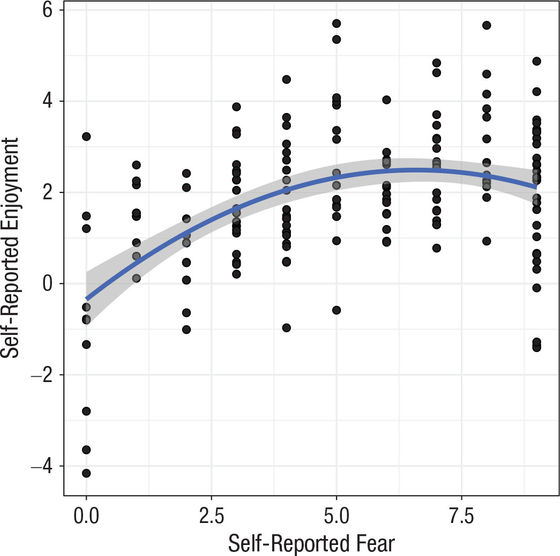Research on haunted houses reveals that 'horror is not fun if it's too scary'

According to a survey of monitoring visitors to a
Playing With Fear: A Field Study in Recreational Horror --Marc Malmdorf Andersen, Uffe Schjoedt, Henry Price, Fernando E. Rosas, Coltan Scrivner, Mathias Clasen, 2020
https://journals.sagepub.com/doi/10.1177/0956797620972116
Haunted House Researchers Investigate the Mystery of Playing With Fear – Association for Psychological Science – APS
https://www.psychologicalscience.org/news/releases/2020-oct-playing-with-fear.html
New haunted house study suggests there's a sweet spot for recreational fear | Ars Technica
https://arstechnica.com/science/2020/11/new-haunted-house-study-suggests-theres-a-sweet-spot-for-recreational-fear/
'Horror' is a major genre in many entertainment works such as horror movies, horror novels, and horror games. The mixed emotion of fear and lack of fun is academically called 'Recreational Fear', and it is believed that people seek horror works to obtain entertainment fear. I will.
A new study published by Mark Malmdorf Andersen and colleagues at Aarhus University in Denmark seeks a degree of fear that maximizes entertainment fear. Andersen and colleagues conducted a survey to measure the fear of visitors at the commercial haunted house Dystopia in Vejle, Denmark.
By the way, you can enjoy this kind of horror experience at Dystopia.
DYSTOPIA Haunted House 2018 --MOTHER --YouTube
A total of 110 subjects aged 12 to 57 (mean age 30.45 years, 62 women, 48 men) participated in this survey. While each subject was going around Dystopia, the subject's heart rate and reaction were recorded from the heart rate monitor worn and the infrared camera installed in the hall, and questionnaire surveys were conducted before and after admission.
Dystopia has a variety of attractions, but in this survey, 'mad scientists unleash zombies,' 'being chased by a big man in a pig mask with a roaring chainsaw,' and 'turning the corner.' We analyzed the heart rate and reaction of three attractions: 'Several zombies attack in a moment.' The following is a part of a movie of a zombie-producing mad scientist attraction taken with an infrared camera.

An attraction of a big man in a pig mask (left side) and a zombie attacking (right side).

Below is a graph that visualizes the relationship between the degree of fear and the degree of enjoyment from the results of having the subjects evaluate the degree of fear felt and the degree of enjoyment for the three types of attractions on a 10-point scale. The horizontal axis is the degree of fear felt by the subject, and the vertical axis is the degree of enjoyment. It has been shown that up to a certain value, the degree of enjoyment increases in proportion to the increase in fear, but when the degree of fear reaches a certain level, the degree of enjoyment rather decreases.

Based on these results, Andersen points out that previous studies on entertainment fear have not performed subjective, behavioral, or physiological levels of analysis. He said the study provided empirical evidence of entertainment fear, saying, 'I wouldn't enjoy it if the attraction participants weren't scared, but at the same time I wouldn't enjoy it if they were too scared.' 'Good fear' seems to be important for maximizing enjoyment. '
The total number of subjects was 110, but 4 had inadequate questionnaires, 10 could not obtain heart rate data, and 4 retired from Dystopia in the middle, so the paper was 'excluded participation. There are issues with the survey method because there were a relatively large number of people. '
Related Posts:







